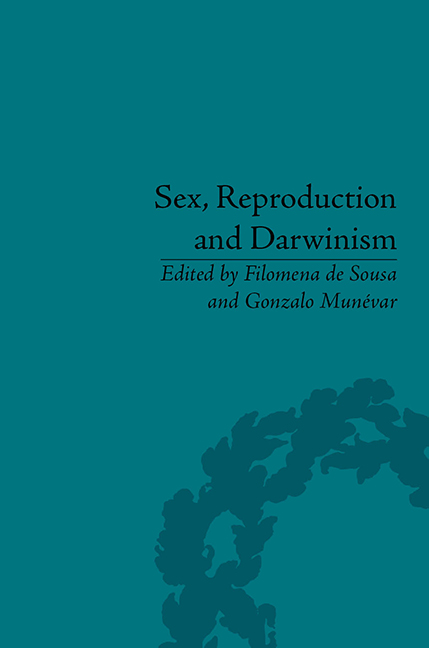Book contents
- Frontmatter
- CONTENTS
- Acknowledgements
- List of Contributors
- List of Figures and Tables
- Introduction
- Part I Reproduction, Mortality and Evolution
- Part II Reproduction without Sex?
- Part III Sex without Reproduction?
- 5 Evolutionary Theory, Constructivism and Male Homosexuality
- 6 Darwinism and Homosexuality
- 7 The Evolution of Female Orgasm: New Evidence and Response to Feminist Critiques
- Part IV Sexual Selection and Morality
- Part V Sex, Reproduction and Evolutionary Psychology
- Part VI Eugenics from Natural to Social Selection
- Notes
- Index
7 - The Evolution of Female Orgasm: New Evidence and Response to Feminist Critiques
from Part III - Sex without Reproduction?
- Frontmatter
- CONTENTS
- Acknowledgements
- List of Contributors
- List of Figures and Tables
- Introduction
- Part I Reproduction, Mortality and Evolution
- Part II Reproduction without Sex?
- Part III Sex without Reproduction?
- 5 Evolutionary Theory, Constructivism and Male Homosexuality
- 6 Darwinism and Homosexuality
- 7 The Evolution of Female Orgasm: New Evidence and Response to Feminist Critiques
- Part IV Sexual Selection and Morality
- Part V Sex, Reproduction and Evolutionary Psychology
- Part VI Eugenics from Natural to Social Selection
- Notes
- Index
Summary
Introduction
Let us consider adaptive explanations from evolutionary theory. Take the timber wolf, one of Darwin's examples. Descended from more generalized and slower carnivores, the wolf evolved specialized traits for hunting swift prey like deer and elk. For any explanation by natural selection, we need to specify not only the traits, but the hereditary basis, connection to fitness and the environmental pressures, as sketched below for the wolf case.
Wolf Selection Model
Population: wolf population
Trait: speed: metatarsal to femur ratio
Hereditary basis: genetic basis for ratio
Connection to fitness: speedier wolves catch more prey
Selection pressure: fast prey elude hungry wolves
We start with variation in the crucial traits of swiftness, slimness and strength, Darwin writes, and because there was a reproductive advantage associated with these traits, we have the wolf 's specialized adaptations for swiftness that contribute to their reproductive success (or fitness) today. What happens in the population as a whole is that the mean speed of the wolves, which is highly variable in the ancestral population, increases over evolutionary time, as the trait is selected generation after generation, until there is a peak in the population distribution of speed, at a high speed.
The Obvious Account
When thinking about female orgasm, at first it seems perfectly obvious that the trait is an evolutionary adaptation: women who have orgasms will want to have more intercourse, and more intercourse leads to more babies.
- Type
- Chapter
- Information
- Sex, Reproduction and Darwinism , pp. 109 - 126Publisher: Pickering & ChattoFirst published in: 2014



